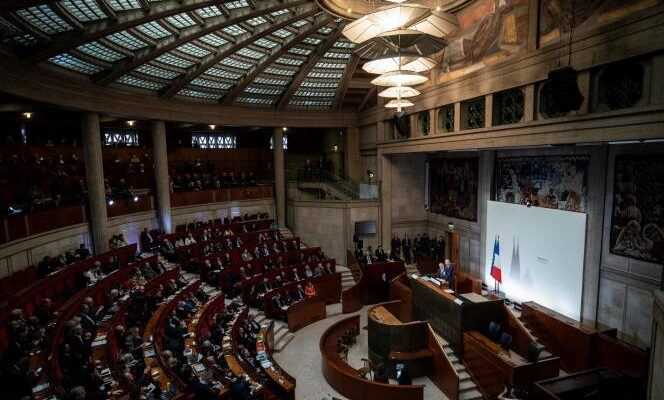François Hommeril, the president of the CFE-CGC, in fact “A matter of principle”. According to information from World, his confederation decided to challenge before the Council of State the new distribution of seats on the Economic, Social and Environmental Council (CESE), because it considers it unfair and contrary to the principles governing the representation of workers.
The composition of the Third Chamber of the Republic was transformed in January by an organic law. One of the main changes consisted in reducing the overall number of advisers, from 233 to 175. In addition, the breakdown of folding seats within the different poles (economic life and social dialogue, nature protection, etc.) has been modified. by a decree of March 24. All these adjustments made some happy but also a lot of losers, who expressed their dissatisfaction. However, the government relied on the recommendations of a report submitted in March by Jean-Denis Combrexelle, deputy president of the interior section of the Council of State.
Until now, the unions had not made a splash while they themselves were subjected to a severe slimming treatment, the number of their representatives at the EESC going from 69 to 52. To allocate the places, Mr. Combrexelle advocated a calculation formula, which was validated by the executive. Result: fourteen seats at CFDT and CGT, nine at Force Ouvrière, four at CFE-CGC, CFTC and UNSA, two at Solidaires and one at FSU. That is to say as much for the CFE-CGC and the UNSA while the first is representative in the private sector and the public service while the second is only representative among civil servants.
Reflecting the “diversity of the workforce”
This dosage is based on the addition of all the votes obtained by the unions in professional elections in the private sector and in the public service, with a distribution of seats at the highest average. Terms that Mr. Hommeril contests. “It comes down to mixing tea towels and napkins, he laments. The ballots in companies and in administrations do not have the same nature, the participation rates are different and the statutes are different. By aggregating the votes cast in the two ballot boxes, for the public and for the private sector, you do not obtain a balanced representation of society as required by law. “
Me Jean-Jacques Gatineau, lawyer for the CFE-CGC, considers that it is necessary to proceed differently by granting places to representative unions “Within the framework of two distinct sub-colleges” : one for the organizations of private sector employees, the other for those which defend civil servants and public agents. This “Dissociated representation”, he argues, already exists for other institutions – for example regional economic and social councils. In his view, such a device would faithfully reflect the “Diversity of the workforce, unlike the“ globalizing ”approach adopted by the public authorities”, which generates “Distortions” with an over-representation of civil servant organizations.
You have 30.18% of this article to read. The rest is for subscribers only.
